7 Outbound Prospecting Strategies to Your Sales Process
Outbound prospecting is a proactive approach used by sales teams to identify and engage potential customers who have not yet expressed interest in their products or services. Unlike inbound strategies where customers initiate contact, outbound prospecting involves reaching out to prospects through various channels such as cold calling, emailing, social media outreach, and networking events. It’s essentially about casting a wide net to identify and cultivate leads that have the potential to convert into customers.
| Strategy | Description |
| Identify Ideal Clients | Define and research your target clients to personalize outreach and increase response rates |
| Build a Targeted Lead List | Develop a list of potential prospects matching your Ideal Customer Profile (ICP) for focused outreach |
| Personalize Outreach | Tailor messages to specific prospects, appealing to their needs and interests for better engagement |
| Omnichannel Approach | Utilize multiple outreach channels like email, social media, and calls to reach prospects effectively |
| Follow-Up Consistently | Maintain regular follow-ups with potential clients to keep them engaged and move them through the sales process |
| Shorten Sales Cycle | Outbound prospecting helps streamline the sales process, establish urgency, and minimize sales friction for faster conversions |
| Adaptability and Testing | Stay adaptable to market changes, test different strategies, tools, and techniques to continuously improve outcomes |
Integrating effective outbound prospecting strategies into the sales process is crucial for several reasons. Firstly, it allows sales teams to take control of their sales pipeline by actively seeking out and engaging with potential customers. This proactive approach ensures a steady flow of leads and opportunities, reducing reliance solely on inbound inquiries.
1. Understanding Your Target Audience
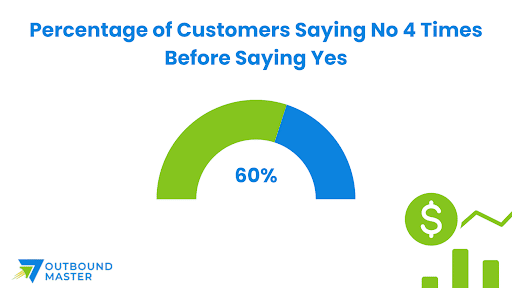
A. Identifying Ideal Customer Profiles (ICPs)
Ideal Customer Profiles (ICPs) are detailed descriptions of the types of customers who are most likely to benefit from your products or services and who are also most likely to become loyal, high-value customers.
Process:
- Analyzing Existing Customer Data: Review past and current customers to identify common characteristics, such as industry, company size, demographics, and purchasing behavior.
- Conducting Surveys and Interviews: Gather feedback from existing customers to understand their needs, pain points, and motivations.
- Collaborating with Sales and Marketing Teams: Engage cross-functional teams to gain insights into the types of customers they believe are most valuable and profitable.
- Refining Criteria: Based on collected data and data enrichment insights, refine and prioritize key criteria that define your ideal customers, such as revenue potential, industry vertical, geographic location, and buying behavior.
B. Conducting Market Research to Understand Customer Pain Points and Needs
Importance: Understanding customer pain points and needs is essential for crafting effective messaging and offering solutions that resonate with potential customers.
Methods:
- Surveys and Questionnaires: Develop surveys to gather quantitative data on customer pain points, preferences, and unmet needs.
- Interviews and Focus Groups: Conduct one-on-one interviews or group discussions with target customers to delve deeper into their challenges, aspirations, and decision-making processes.
- Social Listening: Monitor social media channels, forums, and online communities to identify trends, sentiments, and discussions related to your industry and products.
- Competitive Analysis: Analyze competitors’ offerings, customer reviews, and marketing strategies to identify gaps in the market and areas where your products or services can provide unique value.
C. Creating Buyer Personas to Tailor Outreach
Definition: Buyer personas are semi-fictional representations of your ideal customers based on market research and real data about existing customers.
Components:
- a. Demographic Information: Age, gender, job title, company size, industry, location, etc.
- Psychographic Traits: Goals, challenges, pain points, values, interests, and buying motivations.
- Behavioral Insights: Purchase behavior, decision-making process, preferred communication channels, etc.
Key Features:
- Personalized Messaging: Tailor outreach efforts and marketing campaigns to resonate with specific buyer personas, addressing their unique needs and pain points.
- Targeted Advertising: Use buyer personas to optimize advertising targeting on digital platforms, ensuring your ads reach the most relevant audience segments.
- Product Development: Inform product features, pricing strategies, and user experience design based on the preferences and priorities of target buyer personas.
- Sales Enablement: Equip sales teams with insights into the characteristics and preferences of different buyer personas, enabling more effective communication and relationship-building during the sales process.
2. Crafting Compelling Messaging
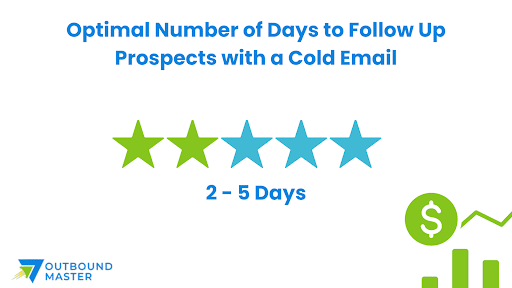
Personalization and Relevance in Outreach Messages
Personalization and relevance are essential aspects of crafting compelling outreach messages. By tailoring your messages to the individual recipient, you demonstrate a genuine understanding of their needs and preferences, increasing the likelihood of engagement. Personalized messages should go beyond simply addressing the prospect by name; they should incorporate insights from previous interactions or research to make the message relevant to the prospect’s specific situation. Segmenting your audience based on characteristics such as industry or role can also help ensure that your messages resonate with each recipient.
Value Proposition Articulation
The value proposition is the cornerstone of any effective messaging strategy. It communicates the unique benefits and advantages of your product or service in a clear and compelling manner. When articulating your value proposition, focus on the tangible outcomes or results that the prospect can expect from using your offering. Highlight what sets your product or service apart from competitors and why it’s the best solution for the prospect’s needs. Incorporating data or statistics to quantify the benefits of your offering can further reinforce its value and impact.
Utilizing Storytelling to Engage Prospects
Storytelling is a powerful technique for engaging prospects and communicating the value of your offering in a memorable way. Effective storytelling creates an emotional connection with the prospect, making your message more relatable and compelling. When crafting stories, focus on real-life examples or case studies that illustrate how your product or service has helped similar customers overcome challenges and achieve success. Use testimonials or success stories to provide social proof and reinforce the credibility of your offering.
A/B Testing Messaging Variations for Optimization
A/B testing is a valuable tool for optimizing your messaging and maximizing its effectiveness. By testing different message variations, you can identify which elements resonate most with your audience and drive the best results. Start by identifying variables to test, such as subject lines, value propositions, or call-to-action language. Then, create multiple versions of your message and randomly split your audience into segments to send each segment a different variation. Analyze the results based on predefined metrics to determine which message performs best, and use those insights to refine and optimize your messaging over time.
3. Leveraging Multiple Channels for Sales Teams
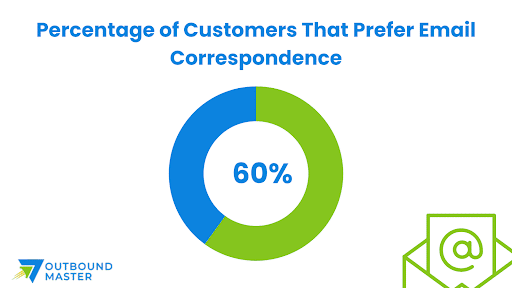
Email Outreach Strategies
Email outreach is a fundamental component of outbound prospecting, offering a direct and scalable way to reach potential customers. Effective email strategies involve crafting personalized and compelling messages tailored to the recipient’s interests and needs. Techniques such as A/B testing subject lines, optimizing email copy for readability and engagement, and incorporating relevant content or offers can improve open and response rates. Additionally, leveraging sales automation tools and segmentation to send targeted emails based on prospect behavior and preferences can enhance the effectiveness of email outreach campaigns.
Cold Calling Techniques for Sales Teams
Cold calling remains a tried-and-true method for initiating contact with prospects and driving sales conversations. Successful cold calling techniques involve thorough preparation, including researching the prospect and understanding their pain points beforehand. Building rapport quickly, delivering a concise and compelling pitch, and actively listening to the prospect’s responses are key to keeping the conversation engaging and productive. It’s also important to handle objections effectively and guide the conversation towards a desired outcome, whether it’s scheduling a follow-up call or arranging a demo.
Social Media Sales Prospecting (LinkedIn, X, etc.)
Social media platforms like LinkedIn and Twitter offer valuable opportunities for prospecting and relationship-building. Effective social media prospecting involves identifying and engaging with prospects through targeted searches, personalized messages, and content sharing. Building a strong online presence by being a X or LinkednIn Sales Navigator, participating in relevant discussions, and providing value through helpful content can establish credibility and attract potential customers. Leveraging social listening top sales prospecting tools to monitor conversations and identify opportunities for engagement allows sales professionals to stay proactive and responsive in their outreach strategies.
Networking Events and Conferences
Networking events and conferences provide invaluable opportunities to connect with prospects in person and build relationships within the industry. Effective networking techniques involve setting clear objectives, such as identifying key contacts or learning about industry trends, and actively engaging with attendees through conversations and interactions. Offering value through knowledge sharing or providing assistance can help establish rapport and make a lasting impression. Following up with new connections promptly after the event reinforces the relationship and keeps the conversation going beyond the initial encounter.
Direct Mail Campaigns
Direct mail campaigns can be a unique and impactful way to stand out in a digital world and capture the attention of prospects. Effective direct mail strategies involve careful targeting and personalization to ensure relevance and resonance with the recipient. Creative and eye-catching design, along with compelling messaging and offers, can increase the likelihood of engagement and response. Integrating direct mail with other marketing channels, such as email or social media, can amplify its effectiveness and drive a cohesive and integrated outreach approach. Tracking and measuring the response to direct mail campaigns allows for continuous optimization and improvement over time.
4. Building and Managing Prospect Lists with Sales Prospecting Tools
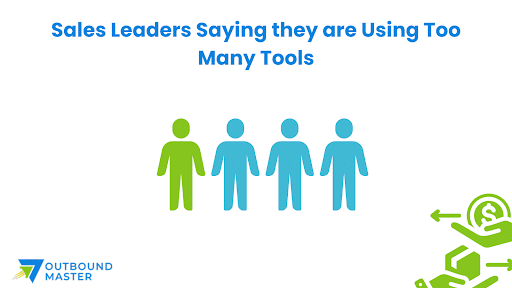
Building and managing prospect lists is a crucial aspect of outbound prospecting, ensuring that sales teams are targeting the right audience with their efforts. Here’s how to effectively build and manage prospect lists:
A. Utilizing CRM Software for Organization and Segmentation
Customer Relationship Management (CRM) software plays a central role in organizing and managing prospect lists. CRM sales prospecting platform allow sales teams to centralize prospect company data, track interactions, and segment prospects based on various criteria such as demographics, industry, or buying behavior. By utilizing CRM software, sales teams can effectively manage their prospect lists, streamline communication, and track the progress of lead generation through the sales pipeline. Additionally, CRM systems often offer sales automation features that can help sales rep prioritize and personalize outreach, leading to more efficient and effective prospecting.
B. Incorporating Lead Scoring Methodologies
Lead scoring is a systematic sales strategy used to evaluate the quality and potential of more prospects based on their interactions with the company. By assigning scores to prospects based on factors such as engagement level, fit with ideal customer profiles, and buying intent, sales teams can prioritize their outreach efforts and focus on prospects with the highest likelihood of conversion. Lead scoring methodologies can be implemented within CRM systems, allowing sales teams to automatically assign scores to prospects based on predefined criteria. By incorporating lead scoring into prospect list management, sales teams can optimize their resources and improve the overall effectiveness of their promising prospects efforts.
C. Regularly Updating and Cleansing Prospect Lists
Prospect lists can quickly become outdated or cluttered with irrelevant leads, making it essential to regularly update and cleanse them. Regular updates ensure that sales teams are working with accurate and current prospect company data, minimizing the risk of wasted effort on outdated or invalid leads. Additionally, regularly cleansing prospect lists involves removing duplicates, correcting inaccuracies, and removing prospects that no longer fit the target criteria. By maintaining clean and up-to-date prospect lists, sales teams can maximize the efficiency of their prospecting efforts and focus their resources on leads with the highest potential buyers for conversion.
5. Implementing Sales Cadences
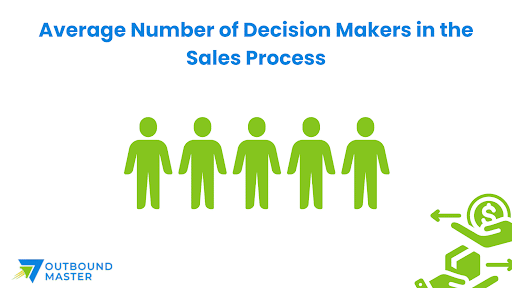
Implementing sales cadences involves carefully orchestrating a series of interactions with prospects to maximize engagement and drive conversions. Here’s how to effectively implement sales cadences:
A. Structuring a Series of Touchpoints for Prospect Engagement
Sales cadences involve structuring a sequence of touchpoints or interactions with prospects across various communication channels. These touchpoints typically include email addresses, phone sales calls, social media outreach, and other forms of communication. The structure of the cadence should be tailored to the prospect’s preferences and buying journey, with each touchpoint serving a specific purpose, such as introducing the product or service, addressing objections, or scheduling a demo. By structuring a cohesive and well-defined series of touchpoints, sales funnel reps can guide sales prospects through the sales leads process and nurture relationships effectively.
B. Establishing Frequency and Timing for Follow-ups
Determining the frequency and timing of follow-ups is essential for maintaining momentum and keeping prospects engaged throughout the sales cadence. The timing of follow-ups should strike a balance between staying top-of-mind and respecting the prospect’s time and preferences. While there is no one-size-fits-all approach, it’s generally recommended to space follow-ups out over time, with intervals that allow for meaningful interactions without overwhelming the prospect. Additionally, consider factors such as the prospect’s level of engagement, their preferred communication channel, and external events or triggers that may impact their responsiveness. Up to date information is needed for better prospecting and lead generation.
C. Balancing Persistence with Respect for Prospect’s Time and Preferences
Balancing persistence with respect for the prospect’s time and preferences is critical for building trust and rapport throughout the sales cadence. While it’s essential to be persistent and proactive in following up with prospects, it’s equally important to be mindful of their boundaries and preferences. Avoid bombarding prospects with excessive outreach or being overly pushy in your communication. Instead, focus on providing value and relevance in each interaction, demonstrating your commitment to helping them solve their challenges or achieve their goals. By striking the right balance between persistence and respect, sales representatives can build stronger relationships with prospects and increase the likelihood of conversion.
6. Providing Value through Content Marketing
Providing value through content marketing involves creating and distributing valuable, relevant, and educational content to attract and engage prospects. Here’s how to effectively provide value through content marketing:
A. Creating Educational Blog Posts, Whitepapers, or eBooks
One of the primary ways to provide value through content marketing is by creating educational resources such as blog posts, whitepapers, or eBooks. These content formats allow you to share in-depth knowledge, insights, and expertise on topics relevant to your target audience. Blog posts can cover a wide range of topics and can be published regularly to keep your audience engaged and informed. Whitepapers and eBooks offer more comprehensive information on specific subjects, providing in-depth analysis, research findings, and actionable insights. By creating high-quality educational content, you can establish your brand as a thought leader in your industry and build credibility and trust with your audience.
B. Hosting Webinars or Workshops Addressing Industry Challenges
Webinars and workshops are valuable sales tools for engaging prospects and providing them with actionable insights and solutions to industry challenges. Hosting live events allows you to interact directly with your audience, answer their questions, and provide real-time guidance and expertise. Webinars can cover a wide range of topics, from product demonstrations to thought leadership discussions, while workshops offer hands-on learning experiences and practical solutions to specific problems. By hosting webinars and workshops addressing industry challenges, you can demonstrate your expertise, showcase your solutions, and establish meaningful connections with prospects.
C. Offering Free Tools or Resources Relevant to Prospects’ Needs
Another effective way to provide value through content marketing is by offering free prospect sales tool or resources that address your prospects’ needs and pain points. These could include calculators, templates, checklists, or other interactive right sales prospecting tools for sales that help in the sales prospecting process solve problems or achieve their goals.
By offering valuable resources for free, you can demonstrate the value of your products or services and establish goodwill with your audience. These free sales prospecting techniques can also serve as lead magnets, attracting prospects to your website and capturing their contact information for future nurturing and follow-up. By consistently providing valuable content and resources, you can build trust and credibility with your audience and ultimately drive conversions and sales.
7. Leveraging Referrals and Introductions
Leveraging referrals and introductions is a powerful strategy for expanding your network and generating new business opportunities. Here’s how to effectively leverage referrals and introductions:
A. Asking Satisfied Customers for Referrals
One of the most straightforward ways to leverage referrals is by asking satisfied customers for recommendations. Happy customers who have had positive experiences with your products or services are often willing to refer their friends, colleagues, or business contacts to you. When asking for referrals, be sure to approach customers who are genuinely satisfied with your offerings and have a strong relationship with your brand. Make it easy for them to provide referrals by clearly explaining the type of leads you’re looking for and offering incentives or rewards for successful referrals.
B. Seeking Introductions Through Mutual Connections
Another effective way to leverage referrals is by seeking introductions through mutual connections. Identify individuals in your network who have relationships with your target prospects or who are connected to key decision-makers in your industry. Reach out to these mutual connections and ask for introductions or recommendations to your target prospects. Personal introductions from trusted contacts can help establish credibility and build rapport with prospects, making it easier to initiate conversations and build relationships.
C. Offering Incentives for Referrals
To incentivize referrals and encourage people to actively promote your business, consider offering rewards or incentives for successful referrals. These incentives could include discounts on future purchases, gift cards, free products or services, or other valuable rewards. By offering incentives for referrals, you provide an extra motivation for people to recommend your business to their contacts. Be transparent about your referral program and clearly communicate the benefits of participating to both referrers and their referrals. Regularly promote your referral program to keep it top-of-mind and encourage ongoing participation from your network.
Conclusion
By integrating these outbound prospecting strategies into your sales process and continuously optimizing and refining your approach based on insights and feedback, you can drive greater efficiency, effectiveness, and ultimately, revenue growth for your business. Embrace a proactive mindset, prioritize relationship-building, and always strive to provide value to your prospects, and you’ll be well-positioned for success in outbound prospecting.
Frequently Asked Questions (FAQs)
What is outbound prospecting, and how does it differ from inbound prospecting?
Outbound prospecting involves proactively reaching out to potential customers who have not yet expressed interest in your products or services, while inbound prospecting focuses on attracting leads through marketing efforts such as content marketing, SEO, and social media engagement.
How do I identify my ideal customer profiles (ICPs)?
Start by analyzing your existing customer base to identify common characteristics and preferences. Conduct market research to understand your target audience's needs, pain points, and behaviors. Use this information to create detailed profiles of your ideal customers based on factors such as demographics, industry, and buying behavior.
What are some effective messaging strategies for outbound prospecting?
Personalize your messages to each prospect by referencing their name, target companies, or recent interactions. Clearly articulate your value proposition and how your product or service addresses the prospect's specific pain points. Utilize storytelling techniques to engage prospects and make your messages more memorable.



